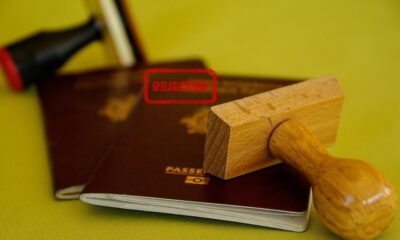Aerospace
When Pilot allowed to take photograph in cockpit

Recently Quartz published an article showcasing photographs pilots have taken from the cockpit of aircraft to post on Instagram. Lets know what’s Aviation regulations explains about cockpit photographs
According CAA
Section 20A of the Civil Aviation Act provides that:
“[a] person must not operate an aircraft being reckless as to whether the manner of operation could endanger’ either the life of another person or the person or property of another person.”
Under the Civil Aviation Regulations, a pilot in command of an aircraft is responsible for the operation and safety of the aircraft during flight time, the safety of people carried on the aircraft, and the conduct and safety of members of the crew on the aircraft.
Under the same regulations, the pilot in command must ensure that one pilot
“is at the controls of an aircraft from the time at which the engine or engines is or are started prior to a flight until the engine or engines is or are stopped at the termination of a flight”.
According FAA
Guidelines of FAA 91.21(6) FAA regulations prohibit commercial pilots from using a personal wireless communications device or laptop computer for personal use while at their duty station on the flight deck while the aircraft is being operated. A personal wireless device may only be used if it is directly related to operation of the aircraft, or for emergency, safety-related, or employment-related communications, in accordance with air carrier procedures.
- S.O. 1353 (E): Regarding Rule 13 of Aircraft Rules, 1937 pertaining to ‘Photographs at aerodromes or from aircraft in flight’ and
- Order No. 9/12/2003-IR dated 9.12.2004 – Permission of photography inside an aircraft.
Here is chart made by Quartz when exactly pilot allow to take photograph .
If YES then happy selfie
Story & Picture credits : Quartz , Aeronautical Information Circular , The conversation

Aerospace
When Ratan Tata was denied entry to the airfield at the Aero India show, he waited

During our visit to Aero India 2019, we had the unexpected opportunity to see Ratan Tata at the event, which was a thrilling moment for us. However, there was a surprising hiccup when the security staff didn’t allow him to enter due to a lack of a security pass.
Despite this, he remained calm and patiently waited for about 20 minutes until a member of the Tata team brought him the required pass, after which he calmly proceeded inside. It was a humbling sight, showcasing his composed demeanor even in such situations.
Ratan Tata ji is not only a renowned industrialist but also a trained pilot, holding a pilot’s license. In 2007, he became the first Indian civilian to fly the F-16 Falcon during the Aero India show in Bangalore—a proud moment for the nation.
His passion for aviation extended beyond flying, as he played a key role in shaping India’s aerospace industry. Under his leadership, Tata ventured into manufacturing and maintaining aerospace components while upholding its legacy of quality. Notably, Tata’s collaboration with Airbus to develop and manufacture the C295 aircraft is a testament to its growing influence in the sector.
-

 Aviation2 months ago
Aviation2 months agoMicrosoft Flight Simulator Raises $3 Million to Bring Back the An-225 Mriya
-

 Airlines2 months ago
Airlines2 months agoQatar Citizens Can Travel to the United States Without a Visa
-

 Defence2 months ago
Defence2 months agoWhich Country Has the Largest Fleet of Fighter Aircraft?
-

 Airlines1 week ago
Airlines1 week agoDAMAC Air: Dubai’s New Luxury Airline Offers Free Flights for Registration
-

 Airlines1 week ago
Airlines1 week agoAir India to Launch aircraft maintenance training institute in Bengaluru
-

 Airport2 months ago
Airport2 months agoWestern Sydney Airport Welcomes Its First Plane After 6 Years of construction
-

 Aviation2 months ago
Aviation2 months agoDid you know ? Once Boeing 747 carried 1088 passenger in 1991
-

 Travel1 week ago
Travel1 week agoThis country tops visa rejections in the popular Schengen countries









